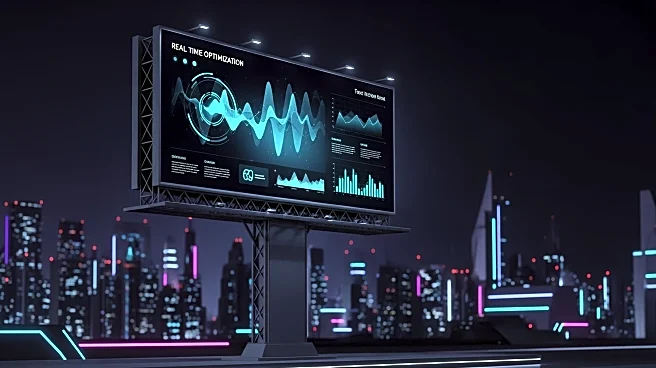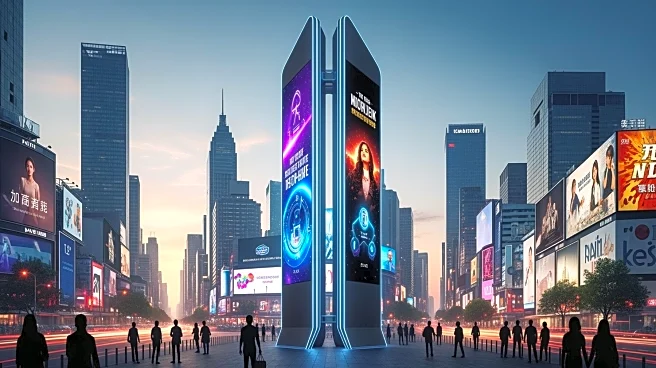What's Happening?
Displayce has unveiled new optimization tools aimed at enhancing digital out-of-home (DOOH) advertising by identifying 'primetime' screens. These screens are predicted to experience audience surges at specific
times, allowing advertisers to focus their spending where impact will be greatest. The approach relies on predictive event data, linking upcoming events like conferences and sports games to nearby DOOH screens to forecast audience movements. This enables advertisers to activate campaigns dynamically, adjusting which screens run based on time of day, audience data, or contextual triggers. The goal is to ensure every impression counts without increasing budgets, by reallocating them intelligently.
Why It's Important?
The introduction of these optimization tools represents a significant shift in DOOH advertising, moving away from traditional fixed schedules to a more dynamic, data-driven approach. This allows advertisers to maximize their reach and efficiency, potentially leading to higher returns on investment. By predicting audience behavior and impression peaks, advertisers can ensure their campaigns are seen by the largest possible audience at the most opportune times. This could lead to increased competition among advertisers for prime screen time, influencing advertising strategies and budget allocations across the industry.
What's Next?
Advertisers and planners are expected to adopt this new mindset, asking questions about audience peaks and data signals during campaign setup. Displayce's Pulse, a predictive optimization engine, will play a crucial role in identifying audience surges and peak-attendance moments, redirecting campaigns to primetime screens. As more advertisers embrace this approach, the DOOH industry may see a shift towards more precise and efficient advertising strategies, potentially influencing how other media platforms approach audience engagement.
Beyond the Headlines
The use of predictive analytics in DOOH advertising raises questions about privacy and data usage, as advertisers rely on detailed event and audience data to optimize campaigns. This could lead to discussions about ethical data collection and the balance between effective advertising and consumer privacy. Additionally, the focus on primetime screens may influence urban planning and event scheduling, as cities and venues consider the impact of audience movements on advertising strategies.











